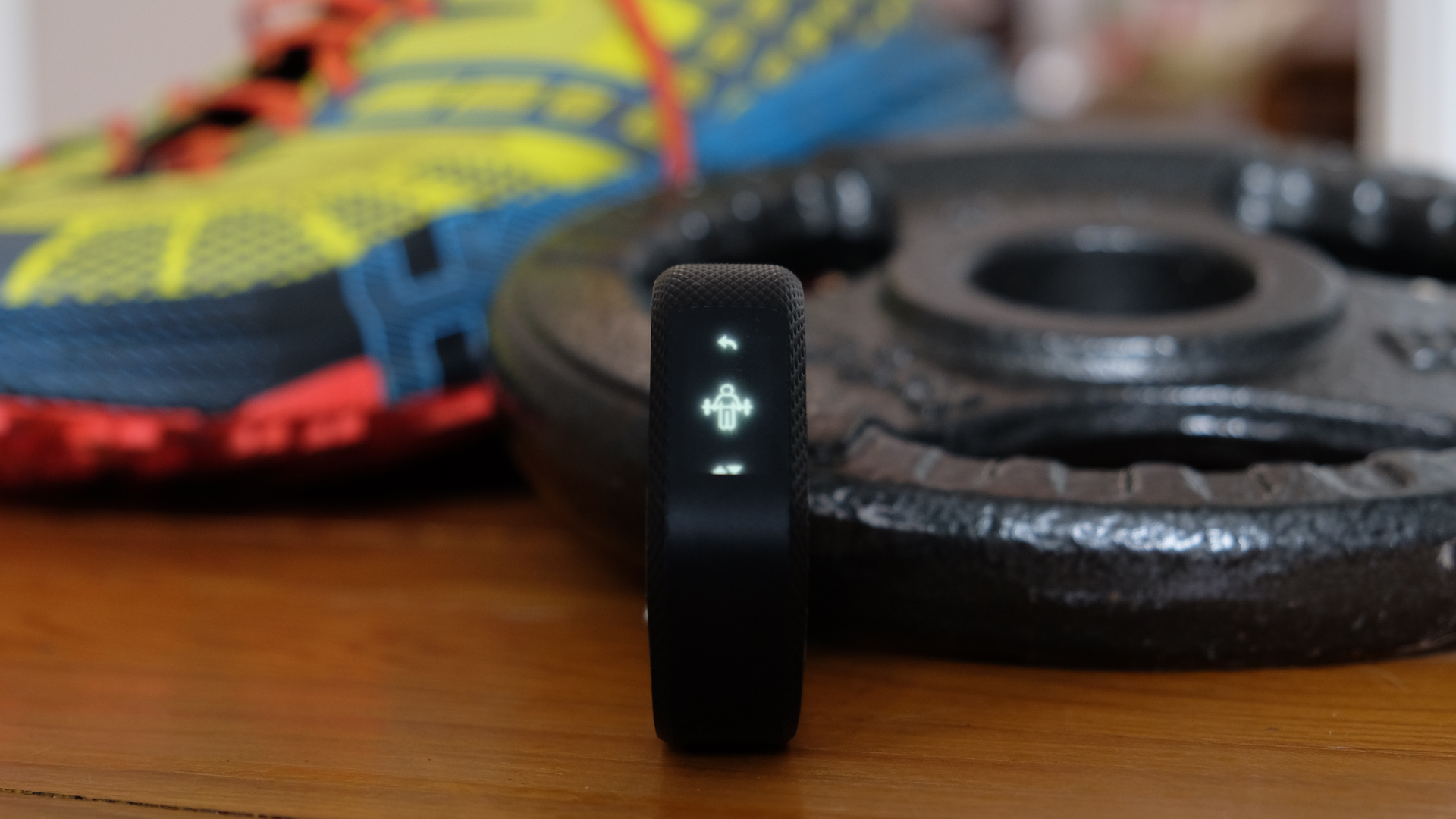TechRadar Verdict
The Garmin Vivosmart 3 might not look like much but it's packed full of fitness tracking features, from rep counts to a fitness age. It's good value too, but more aimed at gym-goers than runners.
Pros
- +
Rep counting
- +
Auto activity tracking
- +
Smart notifications
Cons
- -
No GPS
- -
Hit and miss wake movement sensing
- -
Plain design
Why you can trust TechRadar
Garmin is pushing its activity tracking to a new level with the Vivosmart 3. This wrist-placed wearable is Garmin’s third generation of the Vivosmart, after skipping the number 2 in favor of the Vivosmart HR+.
This decision to drop the HR+ in the name is telling, as Garmin doesn’t only want to focus on heart rate monitoring with the Vivosmart 3.
This is because it now offers VO2 max, fitness and strength training, with rep counting too. A tall order indeed to cram all that into such a small package.
Garmin Vivosmart 3 price and release date
Garmin has managed to keep the price of the Vivosmart 3 at the lower end with a launch price tag of $139.99/£129.99/AU$229. We've seen that price drop a little bit since it launched and the lowest we've seen it is around the $90/£85 mark.
The low launch price of the Vivosmart 3 was a must to help place it perfectly against the competition from activity tracking specialist Fitbit, which offers a similarly sensor-filled Alta HR.
Of course, with the different versions of the Apple Watch on many wrists already, offering lots of tracking options too, these activity trackers must deliver more than ever to justify the price of yet more kit.
So are these new tracking metrics going to make the Garmin Vivosmart 3 a must-have activity tracker?
Sign up for breaking news, reviews, opinion, top tech deals, and more.

Design
- Tough and comfortable
- Not stunning looking
- Responsive touchscreen
Garmin hasn’t gone too far away from its original design and instead has stuck to a simple yet effective build. As such the Vivosmart 3 isn’t going to turn many heads, but, importantly, you’ll barely notice it either.
Thanks to the slim silicone strap this 21g activity tracker can be worn day and night without you noticing it’s there. And the color options of black, purple and blue are all dark, allowing them to slip into the background easily.
There’s a nice amount of stretch to that strap and multiple buckle lock lengths, so you can wear the Vivosmart 3 comfortably loose without it affecting heart rate tracking.
It’s also waterproof, so you can swim, shower and bathe without taking it off, which lets you genuinely forget it’s there - ideal at night for sleep tracking then.

That silicone casing is also tough, so you don’t need to worry about giving it a knock or two, which is handy if you’re planning on swinging your arms about in a gym workout. The rugged screen also performs well on this front.
That OLED display seamlessly fits into the strap and offers plenty of brightness even in a well-lit gym. Despite looking a little matt and tough in its finish - which can appear almost steamed up at times - the touchscreen works surprisingly well.

Double taps start and pause a workout while swipes zip between options - even when in rain this worked excellently. The resolution is fine for the job at 64 x 128 pixels on a meagre 9.6 x 19.2mm display, although WhatsApp messages can take a fair bit of swiping to get through if they’re long.
The only complaint about the screen would be daytime brightness and activation sensitivity. While the light sensor adapts to offer a bright enough screen to see in daylight, it can sometimes take a while to get up to full power.

It also appears that Garmin has opted for the wearable to play it battery-safe and only activate if you exaggeratedly swing your wrist up to your face.
As a result you find yourself doing it more than once to get an activation and end up feeling a bit self conscious when out and just wanting to check the time.
The charger is, of course, proprietary. The cable plugs into any USB charging port, which is helpful, and the clip attaches easily, plus the device clearly shows on screen when it’s charging. All nice and simple then, and this isn’t required often, but more on that later.
Luke is a freelance writer and editor with over two decades of experience covering tech, science and health. Among many others he writes across Future titles covering health tech, software and apps, VPNs, TV, audio, smart home, antivirus, broadband, smartphones, cars and plenty more. He also likes to climb mountains, swim outside and contort his body into silly positions while breathing as calmly as possible.

